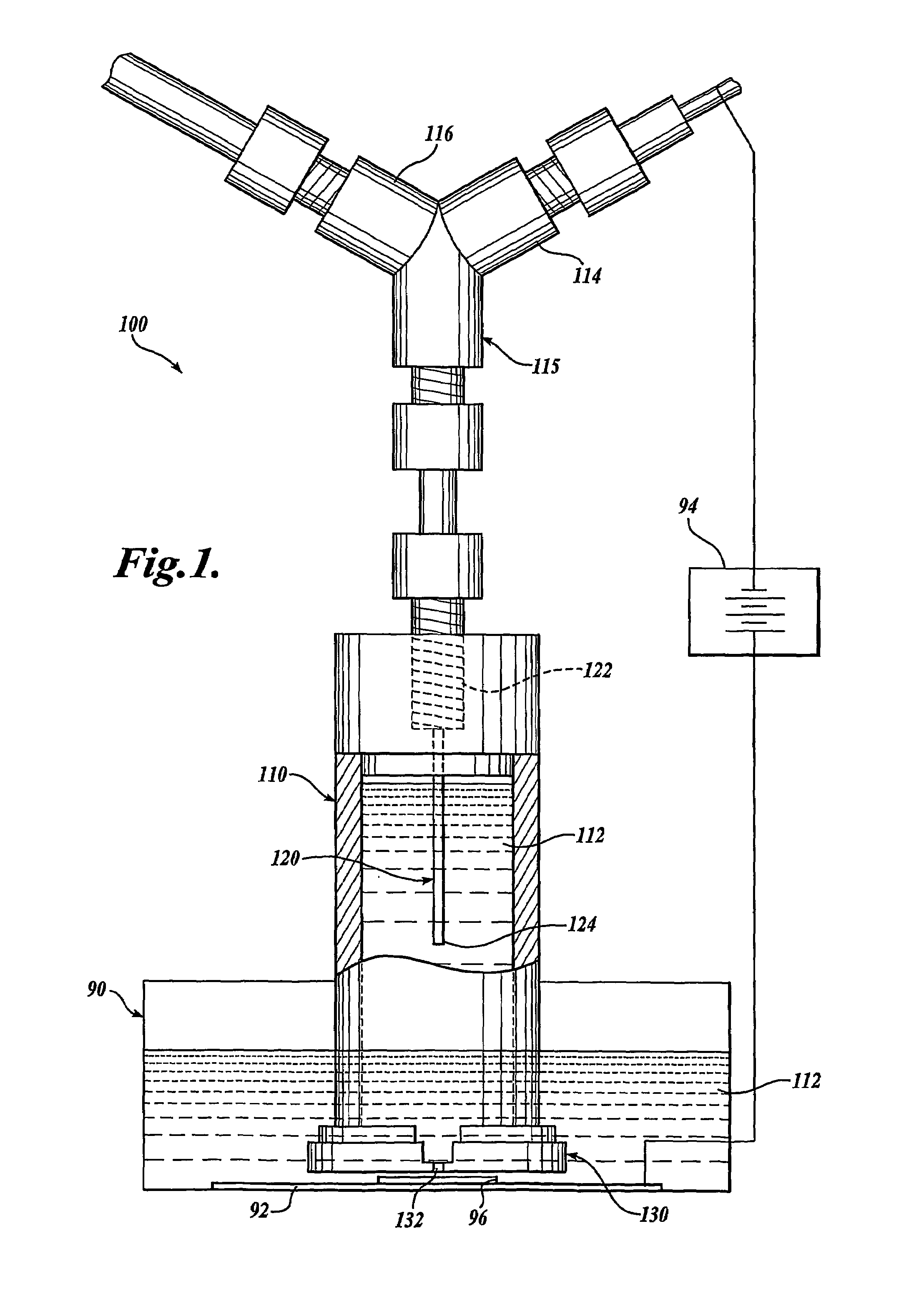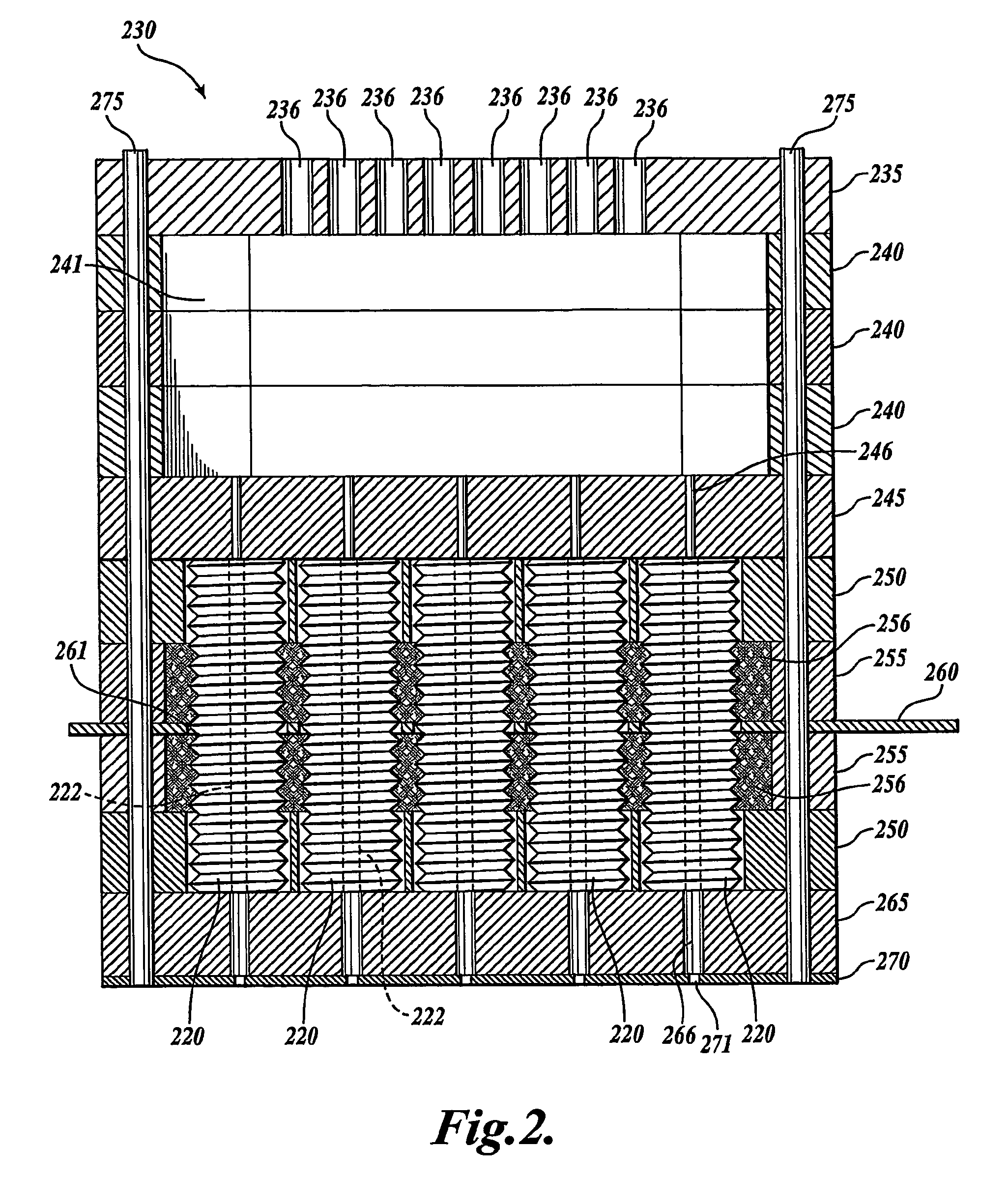Electrochemical micromanufacturing system and method
a micromanufacturing and electrochemical technology, applied in the field of electrochemical deposition, can solve the problems of reducing the efficiency of microelectronic systems, so as to achieve high electrical resistance and high deposition rate , the effect of easy dissolution or etching
- Summary
- Abstract
- Description
- Claims
- Application Information
AI Technical Summary
Benefits of technology
Problems solved by technology
Method used
Image
Examples
Embodiment Construction
[0028]The present invention will now be described with reference to the figures, wherein like numbers indicate like parts.
[0029]A single-pixel prototype embodiment of an electrochemical printing system 100 is shown in FIG. 1. The electrochemical printing system includes a head adapter 110 that is at least partially filled with an electrolyte 112. A counter electrode 120, for example, a platinum wire counter electrode, extends through a port opening 122 into the head adapter 110 and into the electrolyte 112. In the disclosed embodiment, the counter electrode 120 is threaded through one input port 114 of a Y-adapter 115, wherein a distal portion 124 of the counter electrode 120 is immersed in the electrolyte 112. The second input port 116 of the Y-adapter 115 is connected to a pressurized source of electrolyte 112, such that replenishing electrolyte is provided under pressure to the head adapter 110.
[0030]A printer head 130 is attached to the lower end of the head adapter 110. The pri...
PUM
| Property | Measurement | Unit |
|---|---|---|
| diameter | aaaaa | aaaaa |
| diameter | aaaaa | aaaaa |
| diameters | aaaaa | aaaaa |
Abstract
Description
Claims
Application Information
 Login to View More
Login to View More - R&D
- Intellectual Property
- Life Sciences
- Materials
- Tech Scout
- Unparalleled Data Quality
- Higher Quality Content
- 60% Fewer Hallucinations
Browse by: Latest US Patents, China's latest patents, Technical Efficacy Thesaurus, Application Domain, Technology Topic, Popular Technical Reports.
© 2025 PatSnap. All rights reserved.Legal|Privacy policy|Modern Slavery Act Transparency Statement|Sitemap|About US| Contact US: help@patsnap.com



